A Journey around the Seven Wonders of the Ancient World!
- Erica Pereira
- Jun 6
- 6 min read
The Seven Wonders of the Ancient World weren’t just marvels of architecture—they also reflect how deeply connected ancient Mediterranean civilizations like Egypt, Greece, and those in modern-day Turkey were through trade, culture, and shared knowledge. As surprising as it may sound, there have been many wonders selected all around the globe but, today it will be all about the ancient world. Buckle up and get ready for a journey to the past!
1. The Great Pyramid of Giza...
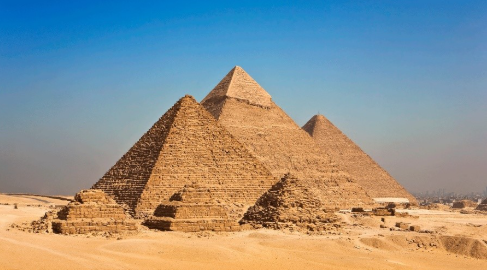
The Great Pyramid of Giza, the only Wonder from these seven that is still standing tall and mighty.
For nearly 4,000 years, it has stood as the tallest man-made structure. This pyramid was constructed around 2560 B.C.E. on the west bank of the Nile River, and it is thought that it served as the tomb of the fourth century pharaoh Khufu (Cheops), though no mummy was found... There are many theories regarding to how it was actually built, some of these theories suggest they used massive ramps, internal passageways, or even friction-reducing techniques like wetting sand, while others suggest there might have been some lost advanced civilizations that may have intervened to help create it. Despite the mystery, what’s clear is that the pyramid’s construction required massive organization, skilled labour and a very advanced understanding of engineering far ahead of its time*.
From all the pyramids, this one is the tallest and that is why it was given the name of the ‘Great Pyramid’. All the pyramids were massive tombs for the pharaohs but, this one stands out the most for its size and grandiosity. It is also almost perfectly aligned with the cardinal points (north, south, east, west), and its base is nearly a perfect square! It is only off by a few centimetres. Another more architectural and mathematical fact about this pyramid, is that the ratio of the pyramid’s perimeter to its height is close to 2 π, which certainly fascinates those studying ancient geometry.
*INTERESTING FACT- Recent studies and research have detected new hidden structures underground, beneath the pyramids. There have been some images that were mapped out using radar technology.
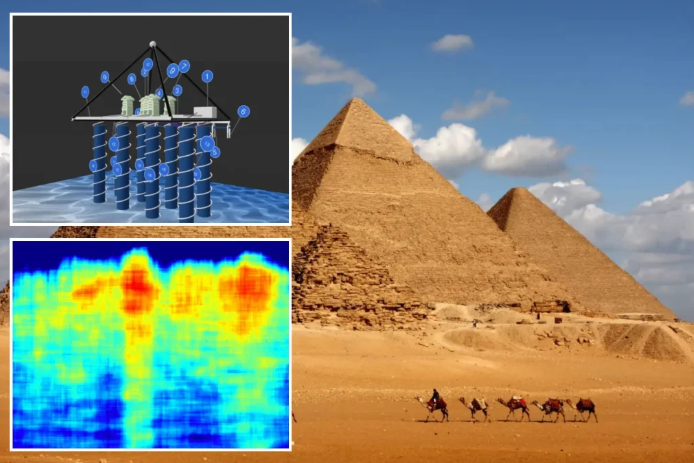
2. The Colossus of Rhodes…
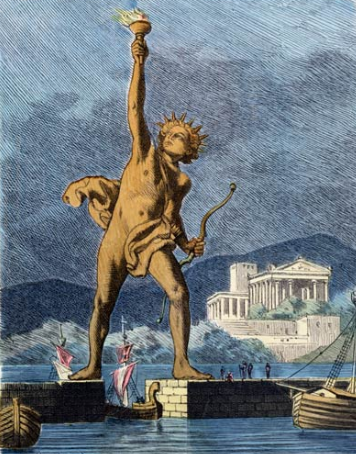
When visitors by this statue of the Greek God Helios*. Between 292 and 280 B.C.E. This statue was brought to life by the Sculptor Chares of Lindos,It is amazing how he was able to complete this project, seen that it was almost the same size as the Statue of Liberty but, built much sooner with much less advanced technology and knowledge. This sculpture, standing at about 33 metres (105-110 feet) was a victory monument designed to honour the defeat of the invading army of Demetrius in 304 B.C.E.
After standing for only 56 years, it came to its tragic end and was destroyed in an earthquake in 224 B.C.E. Despite breaking at the knee level and falling onto the island, the ruins of this statue remained a popular attraction for over 800 years. Apparently, after the statue fell into the harbour, an invading Arabian army looted the remains of the statue and sold them.
Furthermore, the people of Rhodes decided to not rebuild the statue, thinking that the collapse had been a sign from Helios, saying that they had somehow offended him with the construction of the colossus.
*INTERESTING FACT- In Ancient Greek religion and mythology, Helios was the god who personified the sun, often depicted as riding a golden chariot across the sky.
3. The Mausoleum at Halicarnassus…
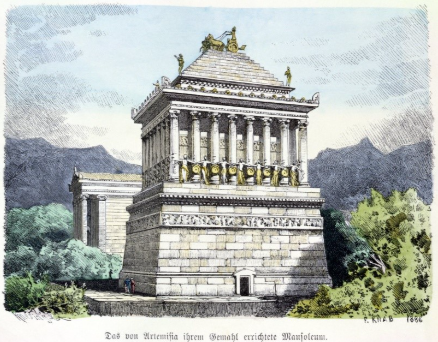
This is the third wonder of Southwestern Turkey, the Mausoleum* at Halicarnassus was built around 350 B.C. as a monumental tomb for Mausolus, a Persian satrap (which is a provincial governor in the ancient Persian empire) and his wife Artemisia II.
The design was the work of Greek architects Satyros and Pythius, who combined elements from Greek, Egyptian, and Lycian architecture. At nearly 45 metres (148 feet) tall, it featured a massive, stepped podium, a colonnade of towering Ionic columns, and a pyramid-shaped roof crowned by a colossal statue of Mausolus in a chariot drawn by four horses.
In addition to its architectural beauty, the mausoleum was adorned with elaborate sculptural reliefs and many statues created by some of the most renowned Greek artists of all time, including Scopas and Leochares. The mausoleum had a lot of Greek influence in its construction. The artworks contained and depicted some scenes of mythological battles and historical events, turning the structure into a kind of open-air art gallery. This mausoleum was considered an extraordinary feat of engineering and artistry, blending culture and symbolism from various ancient civilizations.
Unfortunately, the Mausoleum at Halicarnassus was incredibly damaged by a series of earthquakes between the 12th and 15th centuries, ultimately leading to its collapse.
*INTERESTING FACT- The word ‘mausoleum’ (from the ancient Greek: μαυσωλεῖον) derives from this structure. This word is used to describe stately or impressive buildings housing a tomb or group of tombs.
4. The statue of Zeus at Olympia...
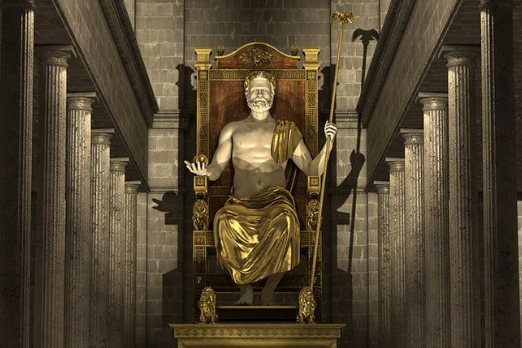
It took the most renowned sculptor of the ancient era, Phidias, to create a statue worthy of celebrating the legendary Greek god Zeus.
Held in western Greece, at the Temple of Zeus at Olympia, this statue showcased Zeus seated on encrusted with gold, precious gems, ivory, and ebony. Zeus held a statue of Nike*, the goddess of Victory, in his right hand, and in the left, a sceptre topped with an eagle.
This statue was revered by most as a stunning earthly representation of the great Greek god that filled passersby with complete awe- until it was destroyed in an earthquake in the fifth century.
*INTERESTING FACT- The name of the sportswear company takes its name from the Greek Goddess of strength, speed, and victory, Nike. This is the perfect representative for a sportswear brand resembling these three features.
5. The lighthouse of Alexandria…
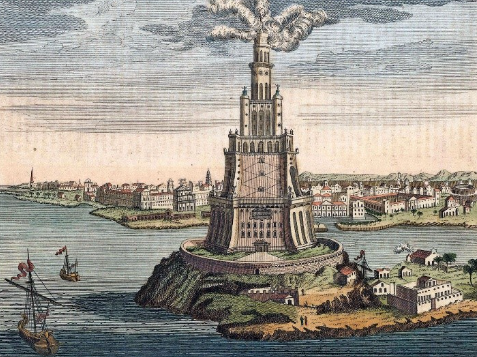
The Lighthouse of Alexandria, one of the Seven Wonders of the Ancient World and the most famous lighthouse in antiquity. It was a technological triumph and is the archetype of all lighthouses since. It was built by Sostratus of Cnidus, perhaps for Ptolemy I Soter. It was finished during the reign of Soter’s son Ptolemy II of Egypt in about 280 BCE.
This lighthouse stood on the island of Pharos in the harbour of Alexandria and is said to have more than 110 meters (350 feet); the only other taller man-made structures at that time would have been the Pyramids of Giza. Much of what is known about the structure of the lighthouse comes from a 1909 work by Hermann Thiersch, Pharos, antike, Islam und Occident. According to some ancient sources consulted by Thiersch, the lighthouse was built in three stages, all sloping slightly inward; the lowest was square, the next octagonal, and the top cylindrical. A broad spiral ramp led to the top, where a fire burned at night.
The lighthouse was destroyed by an earthquake in the 1300s. A large amount of statuary was discovered and some statues representing the deified Ptolemy and his wife, Arisnoe, are thought to have been placed just below the lighthouse, facing the entrance to the harbour.
6. The temple of Artemis…
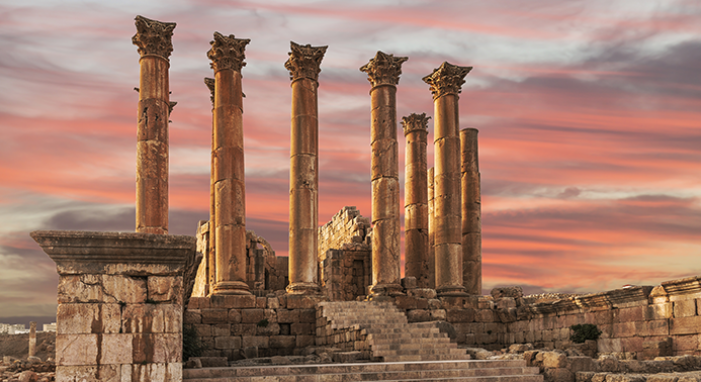
Temple of Artemis, located in Ephesus (which is modern-day Turkey) was built by Croesus, king of Lydia, in about 550 BCE.
The temple faced tragedy when it was burned down in 356 BCE by Herostratus, who sought fame, and again destroyed by Goths in 262 CE. Sadly, it was never rebuilt. While little remains of the structure today, fragments, especially sculptured columns, can be seen in the British Museum.
Copies survive the famous statue of Artemis*, an un-Greek representation of a mummy like goddess, standing stiffly straight with her hands extended outward. The original statue was made of Gold, silver, ebony, and black stone. The legs and hips were covered by a garment decorated with reliefs of animals and bees, and the top of the body was festooned with many breasts; her head was adorned with a high- pillared headdress.
*INTERESTING FACT- Artemis is in Greek religion, the goddess of wild animals, the hunt, and vegetation and of chastity and childbirth; she was identified by the Romans with Diana. Artemis was the daughter of Zeus and Leto and the twin sister of Apollo. Among the popular rural populace, Artemis was the favourite goddess.
7. The hanging gardens of Babylon…
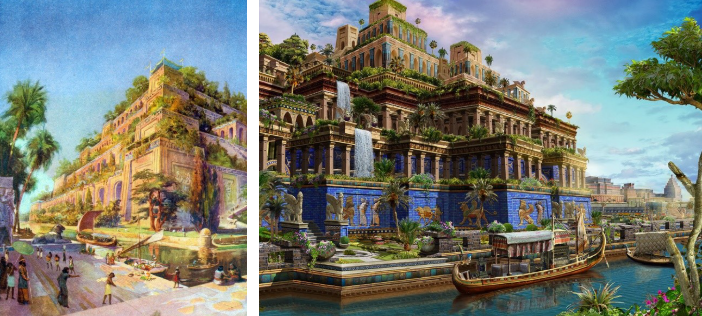
The Hanging Gardens of Babylon, once hailed as one of the Seven Wonders of the Ancient World, are shrouded in mystery regarding their exact location and existence. While many theories abound- some suggesting they were lush rooftop gardens- British archaeologist Leonard Woolley proposed that they were actually terraced gardens built within the royal palace itself. These gardens, believed to be watered by a sophisticated system of pumps drawing from the Euphrates River, may have been created by the legendary Queen Sammu-ramat or King Nebuchadrezzar II. The latter allegedly constructed them to soothe his wife, Amytis, who longed for the greenery of her mountainous homeland, possibly the region of Media. Despite ongoing debates and the absence of definitive archaeological evidence, the true essence of these remarkable gardens remains elusive, captivating the imagination of historians and visitors alike.
Citations…
“Lighthouse of Alexandria.” Encyclopædia Britannica, Encyclopædia Britannica, Inc., 27 Mar. 2025, www.britannica.com/topic/lighthouse-of-Alexandria. Accessed 02 Apr. 2025.
“Seven Wonders of the Ancient World.” Education, National Geographic, education.nationalgeographic.org/resource/seven-wonders-ancient-world/. Accessed 02 Apr. 2025.
“Mausoleum of Halicarnassus.” Encyclopædia Britannica, Encyclopædia Britannica, Inc., www.britannica.com/topic/Mausoleum-of-Halicarnassus. Accessed 02 Apr. 2025.
“Temple of Artemis.” Encyclopædia Britannica, Encyclopædia Britannica, Inc., www.britannica.com/topic/Temple-of-Artemis-temple-Ephesus-Turkey. Accessed 08 Apr. 2025.
“Artemis.” Encyclopædia Britannica, Encyclopædia Britannica, Inc., 13 Apr. 2025, www.britannica.com/topic/Artemis-Greek-goddess. Accessed 21 Apr. 2025.
“Hanging Gardens of Babylon.” Encyclopædia Britannica, Encyclopædia Britannica, Inc., www.britannica.com/place/Hanging-Gardens-of-Babylon. Accessed 21 Apr. 2025.



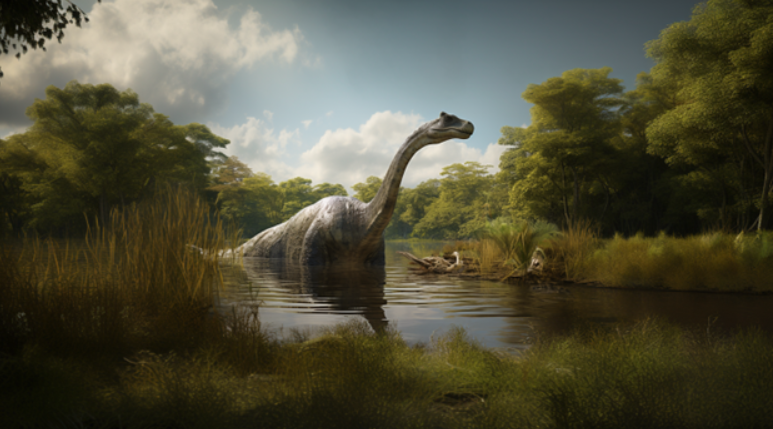


Comments